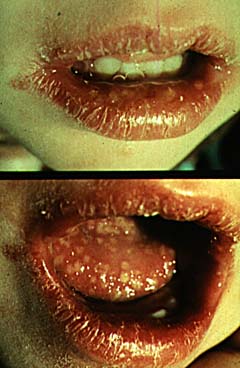What is herpes gingivostomatitis?

herpetic gingivostomatitis picture.Image is taken from http://www.brown.edu/Courses/Bio_160/Projects2000/Herpes/HSV/Photos.html
Herpes gingivostomatitis is an infection of the mouth and lips that is caused by Herpes Simplex virus type I is a different kind of herpes virus than the kind that is sexually transmitted.
Herpes gingivostomatitis commonly present with mouth sores with fever in toddlers and young children (10 years of age with a peak incidence at 2-4 years of age). It is also seen in young adults, especially in more affluent communities (15 to 25 years of age).
Once an individual is infected, the virus spreads to regional mass of nerve tissue, where it remains latent but can be reactivated whenever conditions are appropriate (lack of antibody or immunocompromised condition).
How the diseases can be transmitted?
The infection is passed from person to person through contact with saliva that contains the virus (such as sharing utensils, cups, and bottles; thumb sucking; and putting toys in the mouth). Often the contact is with a person who has cold sores. Continue reading →